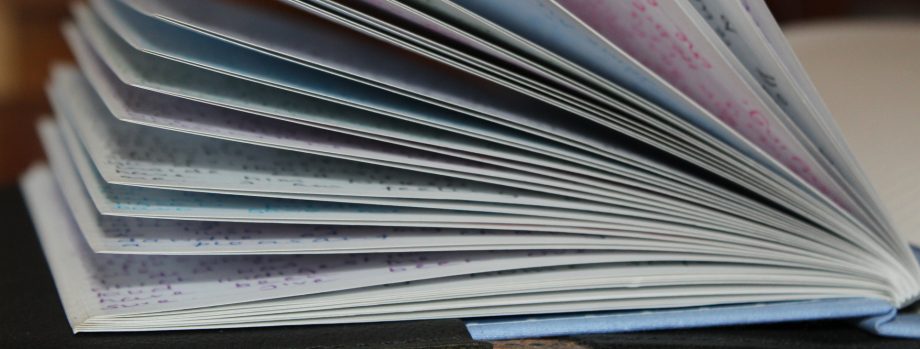Inspiration is everywhere. Carry a notebook.
Victor Hugo
I always have a writing notebook on the go. I’m on the last page of my current notebook, and it’s half full of scribbled lines. As I approach the end of a notebook, I find myself going back and writing in odd gaps and spaces, as if I’m reluctant to let it go.
There is a smorgasbord of scribblings in the book. From story ideas to lists, music that I’ve heard and want to listen to, plus an assortment of quotes – it is a snapshot of a period of time and my shifting interests. Sometimes there will be research on something I’ve seen or a place that I’ve been to, or some notes jotted down about a place I’m hoping to visit.
Keeping notes in this way helps me to make sense of what I’ve seen, to understand things in a deeper way or to reinforce impressions. It is a safe place to step out ideas, or to write down things that have inspired me along the way, such as the guidelines for writing practice by Judy Reeves. There are 12 steps, starting with:
- Keep writing.
- Trust your pen.
- Don’t judge your writing.
- Let your writing find its own form.
Writing snippets such as these down is like leaving a trail of breadcrumbs: if you are lost, there is a pathway if you look close enough.
Flicking through the pages will remind me of moments in time, thoughts jotted down during travels, and words that I’d come across that were new to me (such as epicormic – used to describe new buds that form after a bushfire). It is a way of tracking observations, ideas and inspiration.
I hold onto these disparate jottings as they provide comfort and motivation. There are some things you don’t want to let go of, and my writing notebooks fall into this category for me.

Do you keep a writing notebook?
Inspired by Discover Prompts – April writing prompts




Leave a reply to Ann Coleman Cancel reply